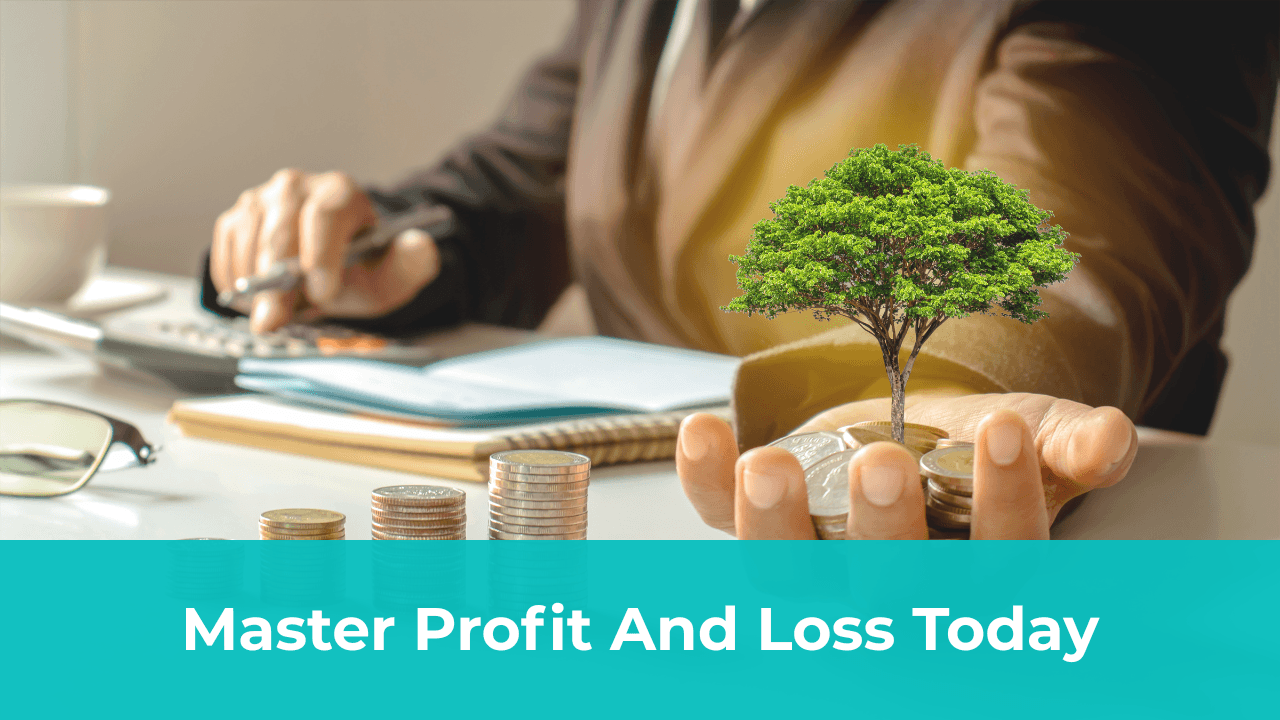Profit and Loss Made Simple for U.S. Business Owners
Running a business in the U.S. means wearing a lot of hats sales, marketing, operations, and yes, finance. One financial report every business owner must understand is the profit and loss statement.
Also called a P&L, this report gives you a clear view of whether your company is making money or losing it. But it’s not just for accountants it’s a decision-making tool that helps you manage expenses, increase profitability, and plan for growth.
In this post, we’ll explain what a profit and loss statement is, what it includes, how to read one, and how small business owners can use it to stay financially strong.
What Is a Profit and Loss Statement?
A profit and loss statement (P&L) summarizes your business’s revenues, costs, and expenses over a specific period typically monthly, quarterly, or yearly. It answers a simple question: Are you making money?
It’s one of the core financial reports, along with the balance sheet and cash flow statement. But the P&L is usually the first report business owners look at when checking financial health.
Why the Profit and Loss Statement Matters
Understanding your profit and loss helps you:
- Measure profitability
- Spot cost problems early
- Make informed budgeting decisions
- Prove your business’s financial performance to lenders or investors
- Stay tax-compliant and audit-ready
For example, a business may see $100,000 in sales but still lose money due to high overhead. The P&L shows where things are going wrong and where to focus improvement.
What’s Included in a Profit and Loss Report?
Here’s what a basic P&L report includes:
- Revenue (or Sales)
The total income earned from your products or services. - Cost of Goods Sold (COGS)
The direct costs of producing those goods or delivering services. - Gross Profit
Revenue minus COGS. This is your profit before operating costs. - Operating Expenses
Includes payroll, rent, utilities, software, marketing, and other day-to-day costs. - Net Profit (or Loss)
What’s left after all expenses. This is the “bottom line.”
Example:
- Revenue: $30,000
- COGS: $10,000
- Gross Profit: $20,000
- Expenses: $15,000
- Net Profit: $5,000
How to Read a P&L Report as a Business Owner
Reading a P&L doesn’t require an accounting degree. Here’s what to focus on:
- Compare Revenue to Expenses: If revenue is growing but profit isn’t, your costs may be too high.
- Review COGS: Is this number rising faster than sales? It might be time to negotiate supplier pricing.
- Track Net Profit Trends: Are you more profitable than last month or last year?
- Look at Ratios: Calculate profit margins (net profit ÷ revenue) to evaluate efficiency.
Common P&L Mistakes SMBs Make
- Ignoring the P&L until tax season
Many business owners don’t review their P&L monthly. That’s like driving with your eyes closed. - Not separating personal and business expenses
Mixing personal and business transactions skews the numbers and causes tax headaches. - Misclassifying expenses
Putting payroll under office supplies or mislabeling software as travel expenses can distort financial insights. - Using outdated or messy books
If your books aren’t reconciled regularly, your P&L won’t reflect reality.
How Often Should You Review a Profit and Loss Statement?
At a minimum, review your P&L monthly. This gives you regular feedback and allows you to:
- Spot trends in revenue or expenses
- Adjust budgets in real time
- Respond to financial risks early
- Prepare for quarterly taxes with confidence
Quarterly and annual P&Ls are useful for long-term planning and showing performance to stakeholders.
How Profit and Loss Fits into Business Strategy
A strong P&L informs decisions like:
- Hiring more employees
- Launching a new product or service
- Increasing marketing spend
- Reducing operational costs
- Expanding to new markets
Instead of guessing, your decisions are backed by real financial data.
P&L vs. Balance Sheet: What’s the Difference?
Both are critical, but they serve different purposes.
|
Report |
Shows |
Timeframe |
|
Profit and Loss |
Profitability |
Over a period (month, quarter, year) |
|
Balance Sheet |
Financial position (assets, liabilities, equity) |
At a single point in time |
Together, they give a complete view of your business’s financial health.
Tools That Generate a Profit and Loss Statement
You don’t have to create these from scratch. Common tools that generate P&Ls include:
- QuickBooks Online
- Xero
- Wave
- Zoho Books
- FreshBooks
Set up monthly auto-reports so you’re never flying blind.
Real-Life Example: Fixing Profit Blind Spots
A Chicago-based design agency showed consistent sales but couldn’t figure out why there was no cash left over each month.
The P&L showed:
- Revenue: $60,000
- COGS: $25,000
- Operating Expenses: $33,000
- Net Profit: $2,000
Their margins were too slim to scale. We helped them analyze vendor costs, reduce unnecessary software, and restructure their pricing boosting profits by 18% in three months.
How VASL Helps with P&L Reporting
At VASL, we offer more than just clean reports. We help business owners:
- Read and interpret their P&Ls
- Identify cost inefficiencies
- Track monthly profit trends
- Customize P&Ls for specific investors or lenders
Our U.S.-focused reporting services are delivered by experienced analysts using tools like QuickBooks, Xero, and Google Sheets dashboards.
Whether you’re a solopreneur or a growing SMB, we’ll give you the clarity you need to run your business with confidence.
Final Thoughts
A profit and loss statement isn’t just a report it’s your business’s scorecard. If you don’t understand it or aren’t reviewing it regularly, you’re leaving money on the table.
With the right support, you can turn your P&L into a tool that drives smart decisions, growth, and peace of mind.
Not sure what your P&L is telling you?
Schedule a free consultation with our reporting experts: Here
Or email us anytime at saman@vasl.team
